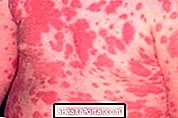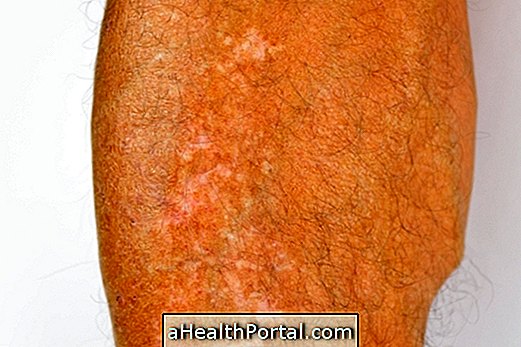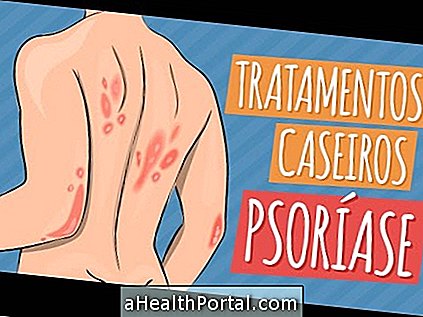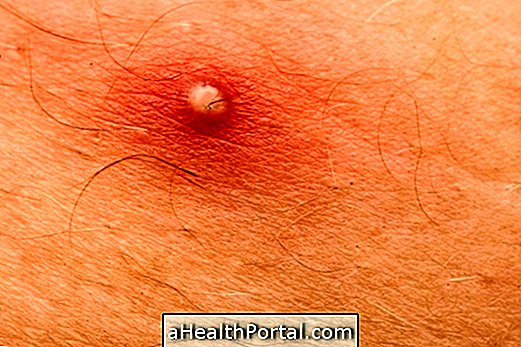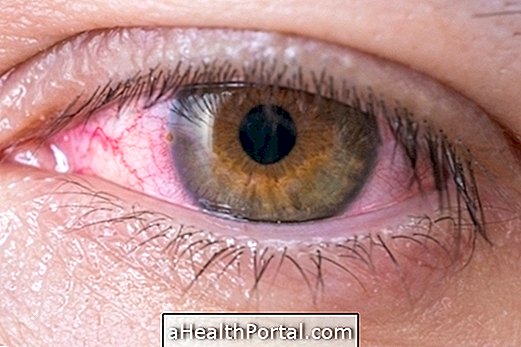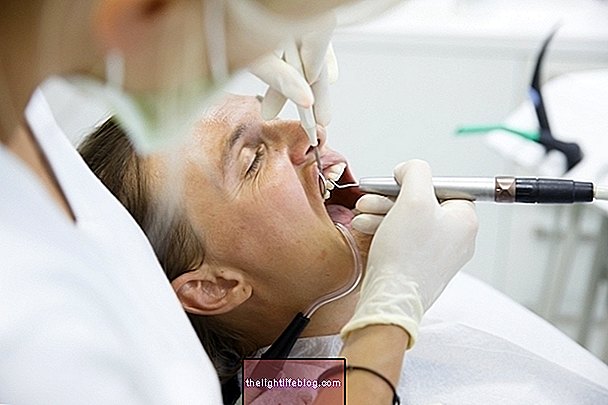Basal cell carcinoma is the most common type of skin cancer, accounting for about 95% of all skin cancer cases. It appears as small spots that slowly grow over time, but do not affect other organs beyond the skin.
In this way, basal cell carcinoma has a good chance of cure because, in most cases, it is possible to remove all cancer cells only with surgery, since diagnosed in the early stages of development.
This type of cancer is most common after age 40, especially in people with fair skin, blond hair and light eyes, who expose themselves excessively to the sun. However, basal cell carcinoma can appear at any age and so it is important to know how to identify signs of skin cancer to ensure good chances of cure.
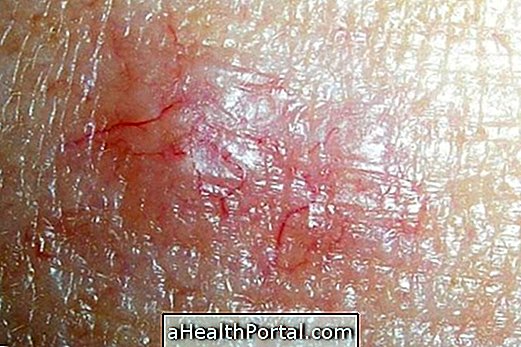
What are the main signs
This type of cancer develops mainly in places exposed to sunlight, such as face or neck, presenting signs such as:
- A small wound that does not heal or bleed repeatedly;
- Small elevation in the skin of whitish color, where it may be possible to observe blood vessels;
- A small brown stain that grows over time;
These signs should be observed by a dermatologist and, if cancer is suspected, a biopsy may be necessary to remove some tissue from the lesion and to evaluate if malignant cells are present.
To avoid these types of signs and decrease the chances of developing skin cancer you need to take care to protect yourself, like using sunscreen and avoid tanning for example.
How is the treatment done?
The treatment is done, in most cases, by laser surgery or cold application, at the site of the lesion, to remove and remove malignant cells. After that, the patient should return to the dermatologist for further examination and assess whether the cancer continues to grow or if he or she is cured. If you have been cured, it is only necessary to return to the doctor once a year to ensure that no further signs appear.
However, when surgery is not enough to treat cancer and carcinoma continues to grow, it may be necessary to do some radiotherapy or chemotherapy sessions to slow the progression and eliminate malignant cells that continue to multiply.
Learn more about the techniques that can be used to treat this type of cancer.

Types of basal cell carcinoma
There are several types of basal cell carcinoma, which may include:
- Nodular basal cell carcinoma: the most common type of carcinoma, which may present a wound in the center;
- Superficial basal cell carcinoma: affects the outermost regions of the skin and may be mistaken for erythema on the skin;
- Infiltrative basal cell carcinoma: the most aggressive carcinoma, being common;
- Pigmented carcinoma: spots with darker regions that make it harder to differentiate from melanoma.
The types of basal cell carcinoma are differentiated according to the characteristics they present and, therefore, can be difficult to identify. Therefore, when the individual presents a dubious stain on the skin should always consult a dermatologist.
If you are looking for information on melanoma skin cancer, see:
- What is Malignant Melanoma and How to Treat It
- How to Identify a Melanoma

